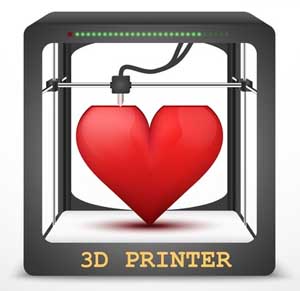Your cart is currently empty!
5 Ways 3D Printing Is Being Used in Medicine
 3D printing for medical purposes has recently caught out attention.
3D printing for medical purposes has recently caught out attention.
Here are 5 ways 3D printing is being used in medicine.
1. Printed Organs
Recent advances in medical 3D printing have altered the way doctors and researchers will view transplant surgery forever. Now it can be used to create vital organs, according to Murphy. In the past decade, researchers have combined 3D printed biocompatible materials, cells and supporting components together, to address the growing need for tissues and organs for transplantation.
These scientifically advanced organs are an outcome of much trial and error and integration of several technologies from engineers, biologists, physicists, and medical doctors.
On March 15th of this year, the first 3D printed organ, a thyroid, will be ready for transplant.
2. Printed Bone and Cartilage
The intricate detail of 3D printing can now directly print porous scaffolds and replicate bone and cartilage structure. According to Bose, scientists can now print bones according to exact shape, chemistry and interconnected porosity. Some of the most recent printed bones have even been engineered to have site-specific growth factors and the ability to deliver drugs into the body.
Last year, the first successful 3D-printed bone transplant was done on a 12-year-old boy who had a tumor on the second vertebra of his spine. Doctors replicated the part of the boy’s spine, printed it, and then replaced the cancerous portion with the replicated part without using any screws or surgical cement.
3. Printed Skin and Cartilage
3D printing has recently been used to replicate specific segments of a patient’s own cells as an aid in complex reconstructive surgeries, according to doctors at the Feinstein Institute for Medical Research in New York. This past January, doctors created a 3D printed trachea, which has been rigorously tested to withstand coughs, sneezes and high levels of shifting pressure, similar to that of a human trachea.
In November of last year, doctors and researchers revolutionized the treatment of burn patients with 3D-printed skin. Healthy skin cells are first harvested from the patient, analyzed, then placed onto the patient’s wound. While there is still some work to be done, researchers claim that 3D printed skin for burn patients will be ready for human trials within the next couple of years.
4. Printed Blood Vessels
3D printed blood vessels have been studied by researchers from the University of Sydney, Harvard, Stanford and MIT, and have solved much of the previous problems associated with printing fully functional human flesh.
Researchers create a skeleton of blood vessels and grow human cells surrounding them. Once stable, they then dissolve the 3D printing material in it, which allows for adequate nutrient flow through the bio-printed tissues. 3D printed blood vessels are a huge advance in 3D printing medical technology, because researchers can use these vessels to create 3D-printed organs, like those mentioned above.
We want to know: What would you create with a 3D printer?
References:
Bose, Susmita, Sahar Vahabzadeh, and Amit Bandyopadhyay. “Bone Tissue Engineering Using 3D Printing.” Materials Today 16.12 (2013): 496-504. Web. 27 Feb. 2015.
Murphy, Sean V., and Anthony Atala. “3D bioprinting of tissues and organs.” Nature biotechnology 32.8 (2014): 773-785.







Leave a Reply